Joro Spiders Invade the East Coast: A Guide to Identifying and Controlling Them

Joro spiders are a type of orb-weaving spider native to East Asia. They are distinguished by their distinctive brown and white coloring and can grow to be quite large – up to two inches in length. Joro Spiders have become more common on the East Coast of the United States in recent years, most likely as a result of the species’ introduction via international shipping and trade.
Joro Spiders have been spotted in several East Coast states, including Georgia, South Carolina, North Carolina, Virginia, Maryland, and Pennsylvania. The spiders are most commonly found in wooded areas and gardens, where they spin their distinctive circular webs.
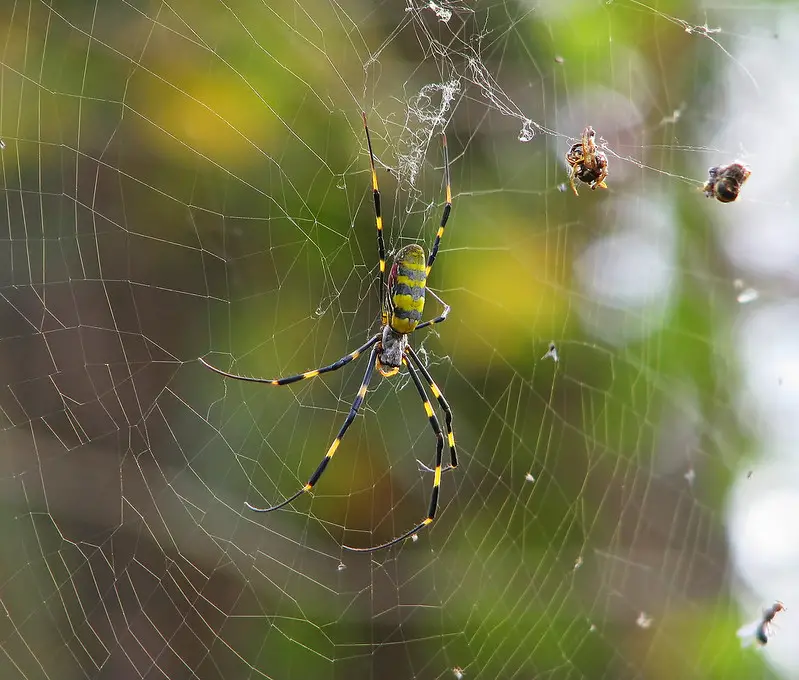
While Joro Spiders are not considered a significant threat to humans, their increasing presence on the East Coast has alarmed some researchers and wildlife experts.
Learning about Joro Spiders is important for several reasons. To begin, correctly identifying Joro Spiders can help avoid confusion with other spider species and ensure that accurate information about their prevalence and behavior is shared.
Furthermore, understanding Joro Spider behavior and habitat can help inform efforts to control their spread and mitigate potential impacts.
Finally, as with any new or emerging species, learning about Joro Spiders can help us gain a better understanding of the natural world and the various species that inhabit it.
Identification of Joro Spiders
Physical characteristics
Joro Spiders have several physical characteristics that distinguish them from other spider species. Their bodies are usually brown or dark orange, with white or beige markings on the legs and abdomen.
Their legs are long and slender, with small spines on the bottom. Joro Spiders have large, prominent pedipalps (sensory appendages near the mouth) that aid in prey capture and mating.
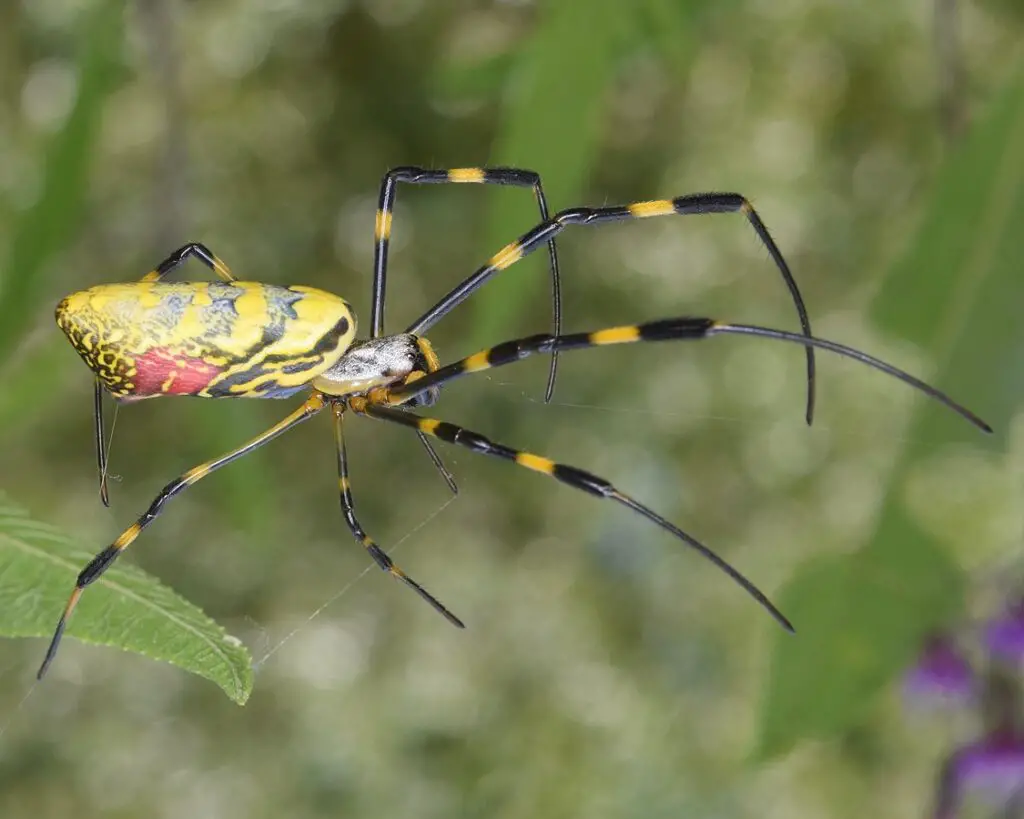
How to differentiate Joro Spiders from other spider species
One of the most difficult aspects of identifying Joro Spiders is distinguishing them from other spider species native to the East Coast. While Joro Spiders and other orb-weaving spiders have many similarities, there are a few key differences that can aid in identification.
Joro Spiders, for example, have a distinct white or beige band around their abdomen that distinguishes them from other brown-colored spiders. Furthermore, their legs are longer and more slender than those of other species, and their pedipalps are typically larger.
Learning to distinguish Joro Spiders from other species is a critical step in correctly identifying and comprehending their behavior and distribution.
Habitat and Distribution of Joro Spiders
Natural habitat of Joro Spiders
In their native range in East Asia, Joro Spiders are typically found in wooded areas and gardens. They have been discovered in similar habitats, as well as in urban and suburban areas, in the United States. They have been observed weaving webs in trees, shrubs, and tall grasses.
States on the East Coast where Joro Spiders are found
Joro Spiders have been reported in Georgia, South Carolina, North Carolina, Virginia, Maryland, and Pennsylvania, as well as other states along the East Coast of the United States.
While their presence in these areas is not yet widespread, researchers are keeping a close eye on their distribution and behavior.
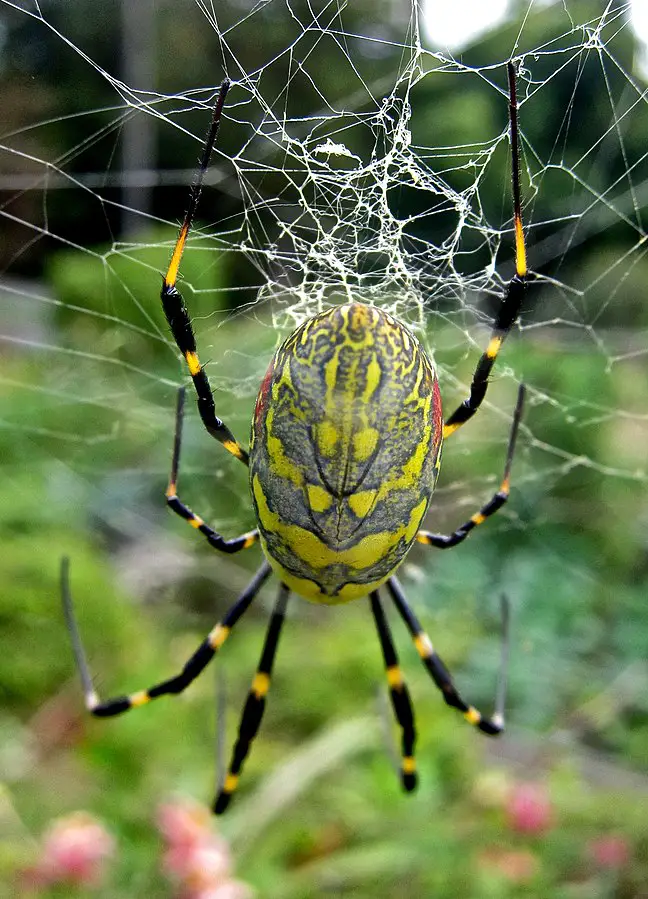
Factors that contribute to their presence in these areas
Joro Spiders are likely to be present on the East Coast due to a variety of factors, including international shipping and trade. Joro Spiders could have been accidentally introduced to the United States via cargo ships or other modes of transportation.
Furthermore, their adaptability to a variety of habitats and climates may have aided in the establishment of populations in the United States. Climate change and other environmental factors could also contribute to their spread and distribution along the East Coast.
Understanding the factors that contribute to their presence in these areas is a critical first step toward developing effective management strategies.
Behavior and Diet
Joro Spiders are nocturnal and spin their webs mostly at night. They are well-known for their large and intricate circular webs.
Joro Spiders are ambush predators, which means they wait for their prey to become entangled in their webs before attacking and devouring them. They are not aggressive to humans and will only bite if threatened or provoked.
Types of prey Joro Spiders consume
Joro Spiders have been observed eating a wide range of insect prey, including moths, flies, and beetles. They have been observed preying on other spiders, including smaller orb-weavers.
Joro Spiders are known to feed on small vertebrates such as frogs and lizards in their native range, but there have been no reports of this behavior in the United States.
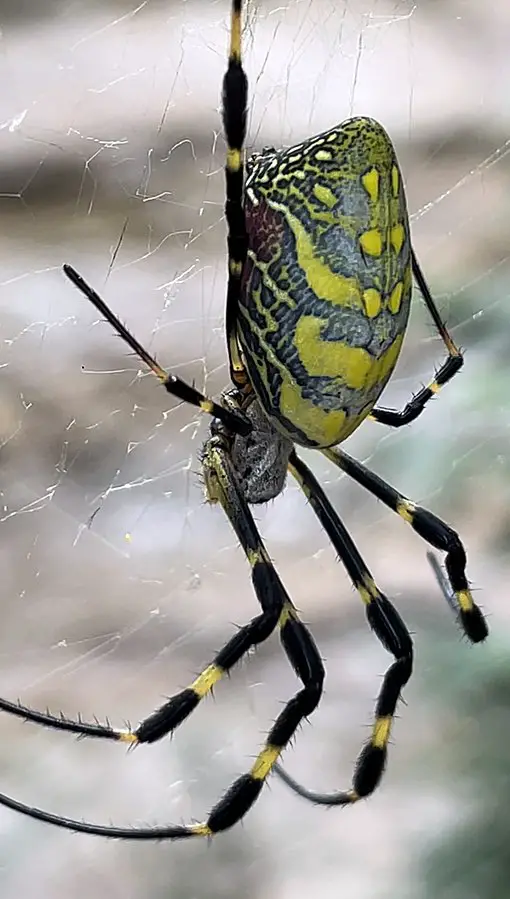
Reproduction and lifespan
Female Joro Spiders lay their eggs in a cocoon-like structure in late fall or early winter. In the spring, the eggs hatch, and spiderlings emerge from the cocoon to begin their own webs and feeding behavior.
Joro spiders are thought to live for up to two years, with females typically outliving males. Understanding Joro Spider reproductive behavior and lifespan is critical for predicting their potential spread and impact on the East Coast.
Potential Impacts of Joro Spiders
Ecological impacts
Joro Spiders’ ecological impacts on the East Coast are not fully understood. Their predatory behavior and adaptability to a variety of habitats and climates, on the other hand, may have an impact on native insect populations.
Furthermore, their presence has the potential to disrupt local food webs and alter ecosystem balance. More research is required to fully comprehend the ecological impacts of Joro spiders in the United States.
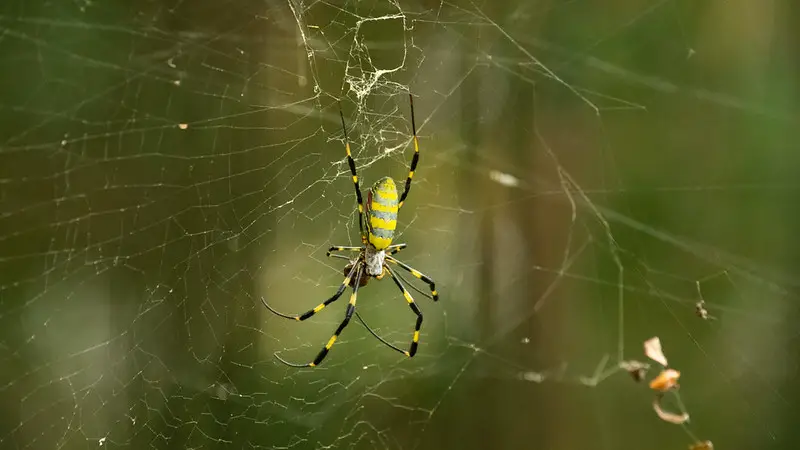
Economic impacts
Joro Spiders could have an economic impact on the East Coast, especially in agricultural areas. If large populations form, they may have an impact on crops and other agricultural products by consuming or harming important pollinators and other beneficial insects.
Furthermore, their presence may have an effect on tourism in areas where they are found, as some people may be hesitant to visit areas with high spider populations.
Health impacts
Although Joro Spiders are not considered dangerous to humans, they can have negative health effects. Their bites can be painful, causing swelling and redness in the affected area. Some people may also experience an allergic reaction to their bites, which could be more severe.
Furthermore, the presence of Joro Spiders in cities and suburbs may contribute to arachnophobia and other anxiety disorders. Understanding Joro Spiders’ potential health impacts is critical for developing effective management and control strategies.
Control and Prevention Methods
Natural control methods
Joro Spider populations can be managed using a variety of natural control methods. One of the most effective methods is to attract natural spider predators such as birds, toads, and other insectivorous animals to the area.
Pruning trees and shrubs can also help to reduce the availability of suitable web-building sites for Joro Spiders. Finally, because of their strong scent, certain plants, such as mint and eucalyptus, can help repel spiders.
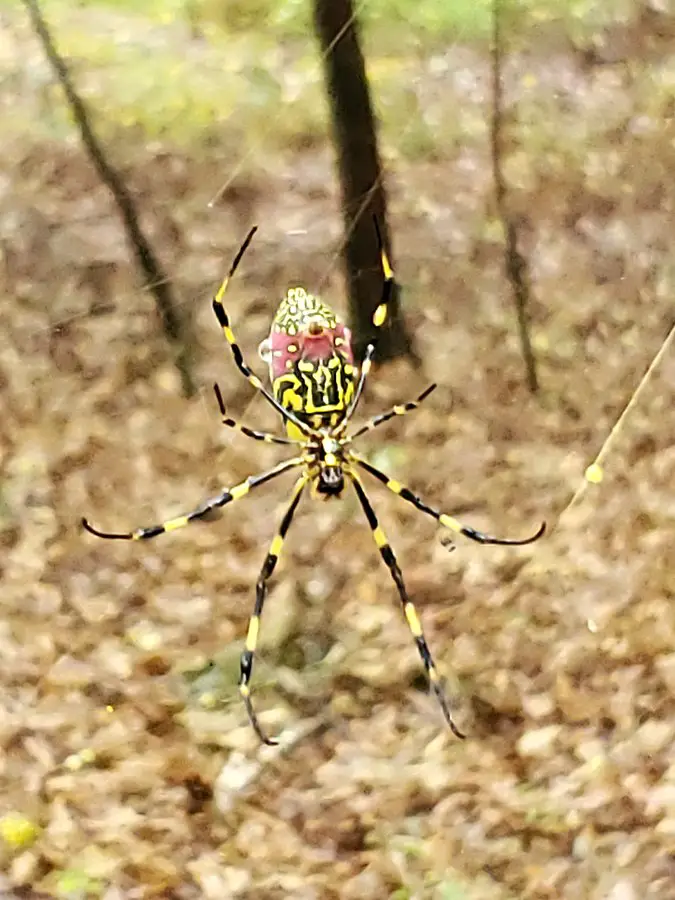
Chemical control methods
Chemical control methods can be effective at reducing Joro Spider populations, but they must be used with caution in order to avoid harming other beneficial insects and the environment.
Spider populations can be controlled with pesticides containing pyrethroids or carbamates. To avoid harming non-target organisms, it is critical to follow all label instructions and use these products responsibly.
Prevention tips for avoiding Joro Spider infestations
To prevent Joro Spider infestations in and around homes and gardens, several steps can be taken. These include keeping the area clear of clutter and debris, which can serve as a home for spiders.
Sealing cracks and crevices in homes and other structures can also help to keep spiders out. Finally, because spiders are less attracted to yellow or sodium vapor lights, using them outside can help to discourage them from building webs nearby.
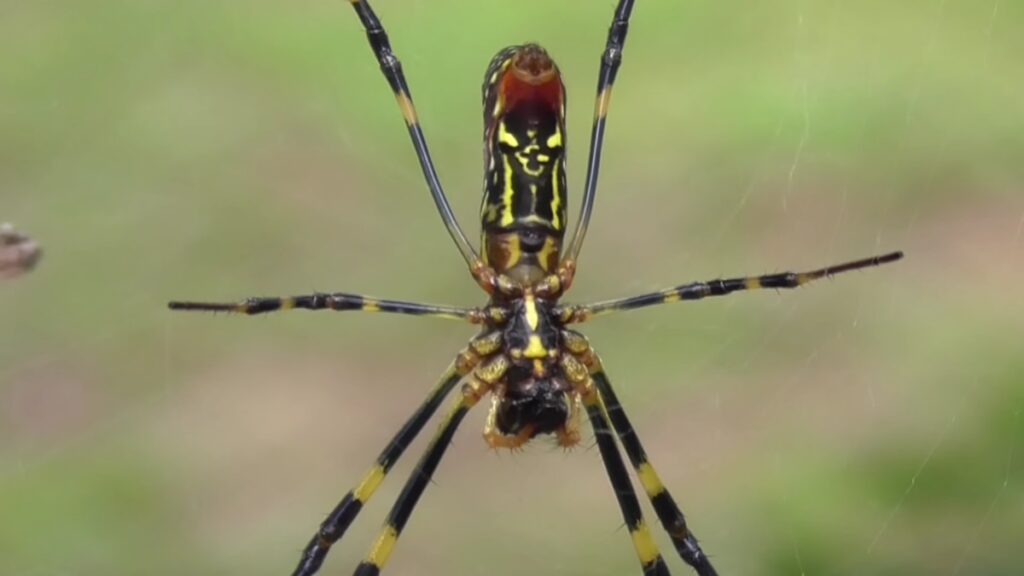
To summarize, Joro Spiders are an invasive species that has recently been discovered on the United States’ East Coast. They are indigenous to Japan and Korea and are known for their large, circular webs and predatory behavior.
Joro Spiders are nocturnal and feed on insects such as moths, flies, and other spiders. While their bites are not dangerous to humans, they can be painful and cause localized swelling and redness.
Joro Spiders have the potential to have ecological and economic impacts on the East Coast, and it is critical to understand their behavior and spread potential in order to develop effective management and control strategies.
Joro Spiders are a potential threat to the East Coast’s ecological and economic well-being. However, with continued research and monitoring, their spread and impact may be limited.
Homeowners, gardeners, and other stakeholders must be aware of the presence of Joro Spiders and take precautions to prevent infestations and reduce their populations where they are found.
Furthermore, ongoing education and outreach efforts can help raise awareness of this invasive species and its potential consequences, as well as promote responsible and effective management practices.
RELATED: Discover the Scariest Wildlife in Australia: Here are 23 Weird Australian Animals You Didn’t Know Existed.
